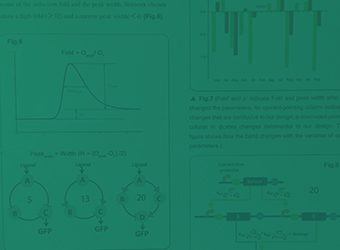Team:Peking
From 2013.igem.org
| Line 271: | Line 271: | ||
<h1 id="ProjectName">Aromatics Scouts<img id="LittleScout" src="https://static.igem.org/mediawiki/igem.org/8/8a/Peking2013_home_Telescope.png" /></h1> | <h1 id="ProjectName">Aromatics Scouts<img id="LittleScout" src="https://static.igem.org/mediawiki/igem.org/8/8a/Peking2013_home_Telescope.png" /></h1> | ||
| - | <h1 id="ProjectSubname">A Comprehensive Biosensor Toolkit | + | <h1 id="ProjectSubname">A Comprehensive Biosensor Toolkit for Profiling Aromatic Compounds in the Environment</h1> |
</div> | </div> | ||
Revision as of 13:15, 26 September 2013

Aromatics Scouts
A Comprehensive Biosensor Toolkit for Profiling Aromatic Compounds in the Environment

Monitoring aromatic compounds in the environment remains a substantial challenge today. Noting the power of biosensors for quick and convenient testing, Peking iGEM has developed a functionally comprehensive biosensor toolkit to profile aromatics in the environment.
Transcriptional regulators that each detect a specific class of aromatics were first bioinformatically determined; and then utilized to build a comprehensive set of biosensor circuits. Characterization of individual biosensor detection profiles and their orthogonality/crosstalk prove that these biosensors are very capable at profiling aromatics present in water.
Moreover, for the ease of practical applications, two types of genetic devices were also developed as plug-ins for biosensors: "Adaptors", a set of conceptually novel devices to convert undetectable chemicals into detectable aromatics, and "Band-pass Filter", a "concentration filter" that allows the detection of analyte concentration within a specific range.
We expect that these novel biosensors, together with the plug-in devices, will serve as intriguing synthetic biological tools for diverse practical applications.
Mining aromatics-sensing Biobricks
from the genomic database

Biosensor Mining
The core component of our biosensor toolkit is the transcriptional regulators that sense aromatics. For the comprehensiveness of aromatics-sensing, a data-mining process was conducted to mine transcriptional regulators for each typical class of aromatics from the database Uniprot.
LEARN MOREHigh-performance, profile-
specific biosensors

Biosensors
A comprehensive set of biosensor circuits has been implemented using the aromatics-sensing transcriptional regulators. Each biosensor has a specific aromatics-sensing profile. Furthermore, the orthogonality of their sensing profiles was carefully assessed for practical applications.
LEARN MOREConvert the undetectable into
the detectable

Adaptors
To expand the detection profiles of some biosensors, enzymes of aromatics-metabolizing were gleaned from natural metabolic pathways, working as Adaptors to convert undetectable chemicals into detectable aromatics when coupled with biosensor circuits.
LEARN MORERapidly tell the concentration
of the analyte

Band-pass Filter
For the ease of practical analysis, a genetic device called "Band-pass Filter" has been constructed to allow the detection of analyte concentration within a specific range. Biosensors equipped with the Band-pass Filter can robustly quantify the aromatics in environmental samples.
LEARN MOREResonate to bridge the gap
between minds

Human Practice
To obtain the information about public awareness and the situation of aromatics pollution, a survey including factory visiting and questionnaires has been conducted. We also guided an iGEM HS team and held "Model iGEM" as a competition without competitiveness.
LEARN MORE
 "
"

